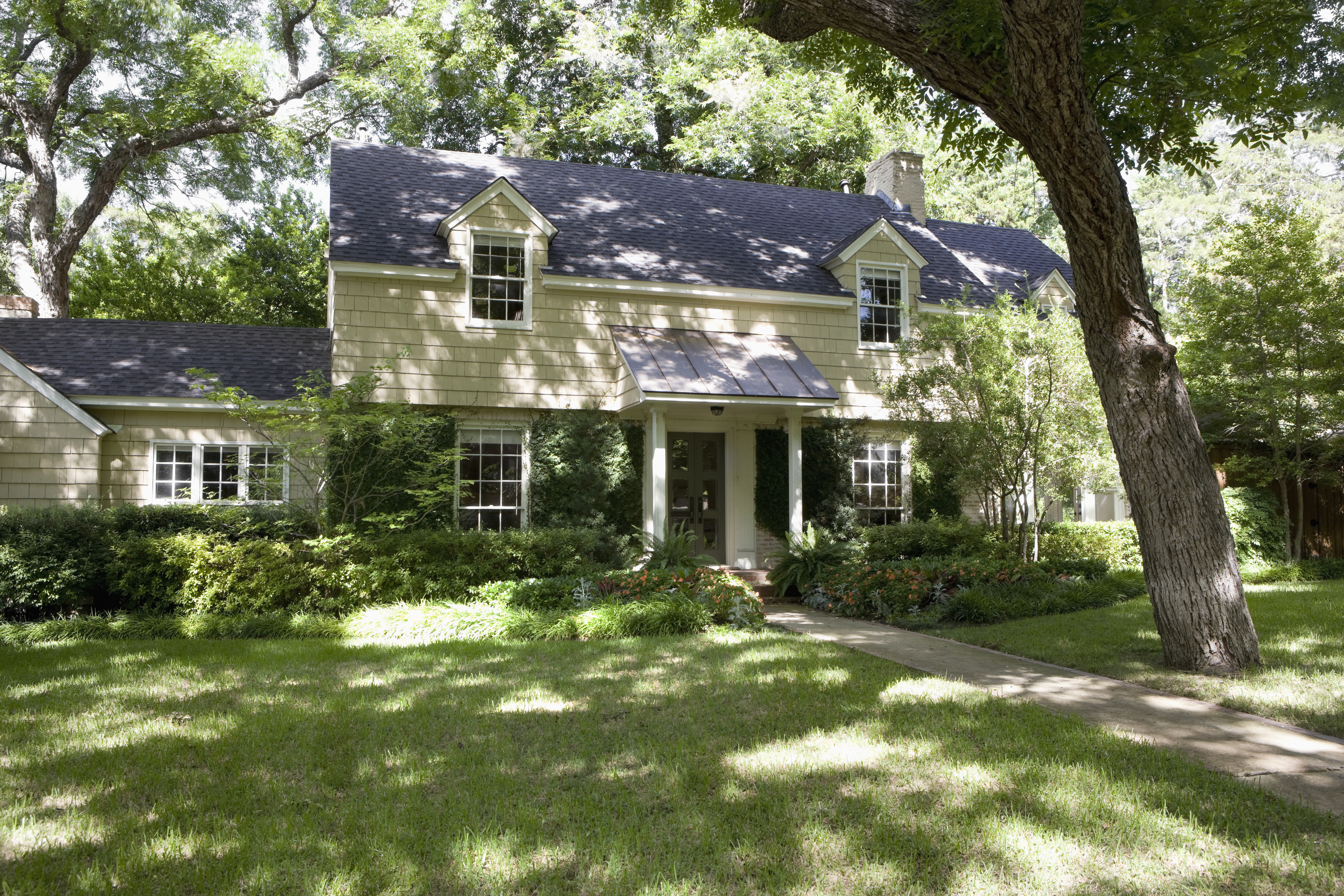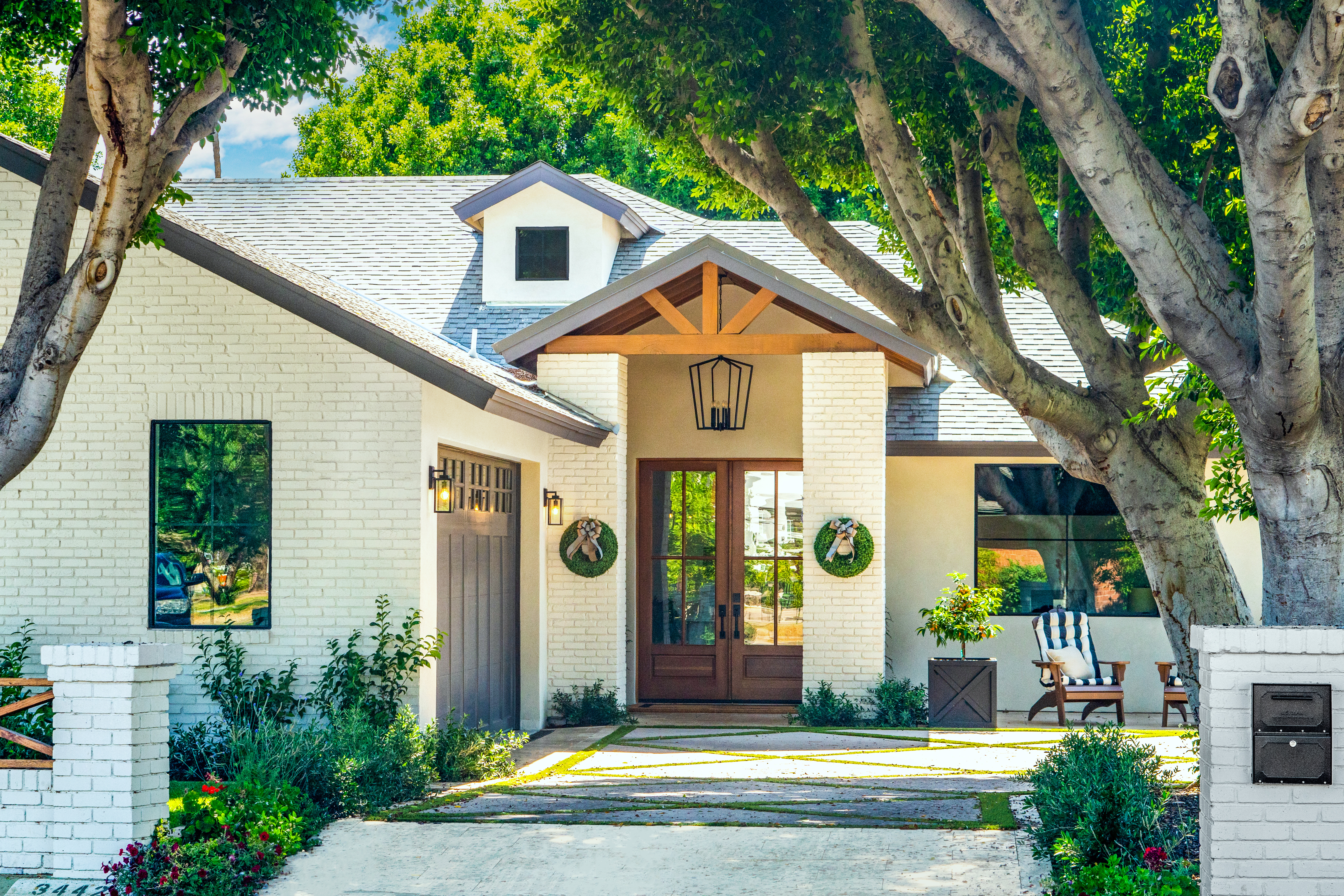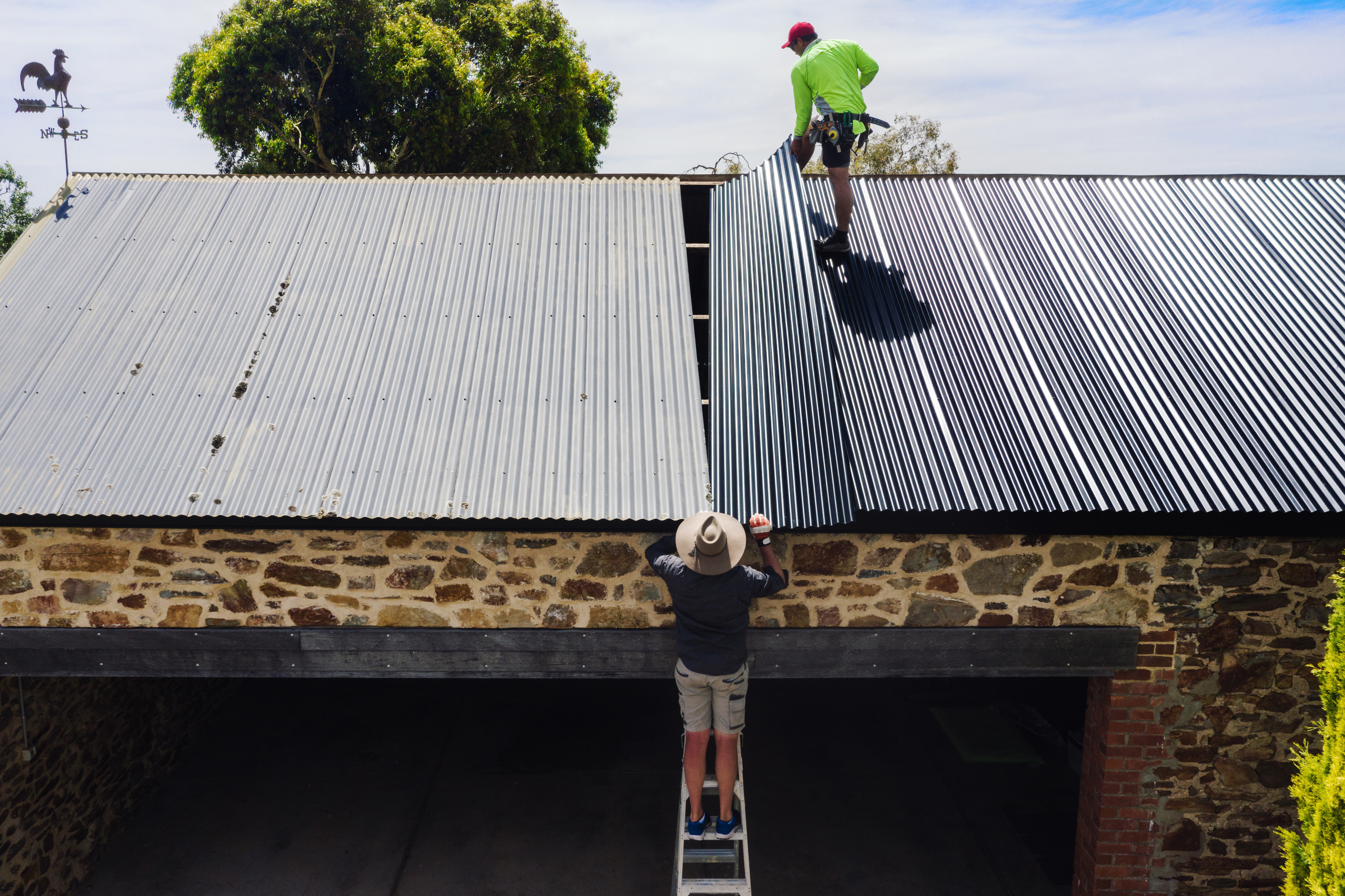
Roof replacement costs in Dallas depend on roof size, material, and more. Find out how much roof replacement costs in Dallas and what affects the final price.
Time to roll up your sleeves


Roll roofing is a budget-friendly, flat roofing material made from mineral-surfaced, oil-based asphalt that comes in 100 square feet rolls. It’s easier to install than traditional roofing materials, available in several different styles and provides up to 10 years of waterproofing and durability. Read on to learn how to install roll roofing on your home in a day.
Roll roofing requires a clean base layer, such as bare wood sheathing. Roof sheathing is another name for roof decking, or the structural base for your roof that is often composed of wooden beams. Remove your current roofing materials before you add your roll roofing. Homeowners with roofing experience can remove shingles themselves, but we recommend hiring a local roof repair company to handle the task if you don’t have prior experience.
Before installing any roofing, it’s important to know the ins and outs of local building ordinances as well as your roof's pitch. Roofs that are 12 inches vertical, with a 1-inch decline (1:12 pitch), or those that are (2:12 pitch) are good candidates for rolled roofing. It’s also important to get to know the types of roll roofing to choose the best material for your home. Roll roofing—also known as MSR (mineral-surfaced roofing)—is available in three styles:
Saturated felt: An organic felt base covered in asphalt—provides extra insulation for your roof.
Smooth finish: An organic felt waterproof base. Made from asphalt with a talc coating to keep it from sticking.
Mineral finish: An organic felt base or fiberglass mat strengthened with asphalt. Thicker sheets, with talc on one side and rock particles on the other.

Grab your measuring tape and measure the length and width of your roof’s surface. Multiply each length and width, and add each section to get the total surface area (in square footage). This number will tell you how many rolls you need for your project. You should buy 5% to 10% more material than your roof’s measured area to account for roll overhang, trimming, and covering up your roof’s valleys. Getting to know common roof rafter sizes can also help you confirm your measurements.

Begin by grabbing a push broom and remove all of the debris. As you clean, keep an eye out for loose nails and hammer them down. Afterward, take the time to clean out your gutters or hire a professional to deep clean them before you begin. Lastly, repair any loose or damaged wood or hire a local roofer for any areas in question.
Prepare your materials and lay the roofing rolls out flat by placing bricks on the corners to keep it in place. Secure roofing felt or primer over your bare sheathing to protect against leaks and provide insulation (while underlayment isn’t necessary, we highly recommend it). Next, add a layer of roofing cement to the edges of your roof and attach drip-edge metal flashing. Nail in the flashing to ensure water stays out of your roofing materials. Add a UV-resistant coating to exposed flashing cement.
Pro tip: If the temperature is under 50℉, lay out the roll in a garage to prevent breaking and stiffening.
Roll roofing is typically installed horizontally. So, you’ll want to grab your measuring tape or yardstick and measure 35 inches—the default roofing measurement—up from the bottom edge of the roof. This measurement will identify where your first roll layer goes, so you’ll need to mark a chalk line across the entire roof (ensure it’s straight so you lay your rolls uniformly).
Grab your gloves and a trowel and spread roofing cement along the edges of the roof—make sure it’s 1/8 to 1/4 inch thick. Apply the cement in horizontal sections, always staying below your chalk lines. Finish one area before moving on to the next one. If you don’t want to deal with cement, you can also use a self-adhesive modified bitumen—just keep in mind, it’s very sticky.

Take your utility knife, apply pressure, and cut your roll roofing to fit each section of your roof. Ensure each section is at least 35 inches wide and meets the chalk line when you lay it down.
Line up the edges of your roof roll and slowly lay the first layer down, pushing it into the wet cement to secure and stretch out any wrinkles. Gather your galvanized roofing nails and a hammer. Plant your feet on the roll and hammer your nails 6 to 10 inches apart across the roof length, ensuring that they are at least 1 inch away from the edges. As you hammer in each nail, avoid lifting your feet. Instead, push them back down as you nail the roof length—this helps stretch the roll. Seal plumbing vents by cutting a hole in the roll and slipping it over the vent. Finally, spread with cement and add boot flashing to keep the roll secure.
Make a new chalk line 32 in. up from the bottom and across your roof above the first 35-inch layer so you can overlap the layers (this way, rain can’t seep through any cracks). Next, grab your trowel and spread another layer of roofing cement across the roof and below the chalk line. Cut your roll, and apply the second layer the same way as the first, making sure the first 6 inches of the second layer overlaps the first layer.
Hammer in your nails (keep the first and second layers together) and spread the roll as you go. Overlay the valleys (where two slopes meet) with an 18-inch cut of roll and add roofing cement before laying the piece down. Seal the top layer edges with cement when all roll roofing is down. Apply roofing sealant over all the nail heads to protect them from the elements.
Walk the entire roof and seal all nails with cement (this will keep them from coming loose).
Take your razor knife and trim any excess roll roofing along your roof’s edges. Seal the edges with another layer of cement.
Once the cement has dried (check your manufacturer's can for drying instructions), you can move on to the final step of your project—cleaning your roof.
To do this, take your push broom and thoroughly clean any dirt, debris, loose nails, and mud off your roof. When you’re back on the ground, take a hose and spray down the roof—never use a hose while you’re on the roof, as it poses a slipping hazard.
When your roof is clean, you can pat yourself on the back for a job well done!
DIYers with prior carpentry and roofing experience can save between $1,500 to $3,000 in labor and materials by tackling this project themselves. DIYers can also save on removing and disposing of old roofing materials, which could run between $1 to $2 per square foot.
Installing roll roofing requires a lot of skill and prior experience that most homeowners may not have. To ensure the job is done right, homeowners should hire a local professional roofing contractor for the following reasons:
Pro roofers understand safety regarding ladders, heights, and how to navigate a roof properly.
Pros come prepared with licensure, insurance, warranties, and roofing compliance codes.
Pros have the proper equipment for old roofing removal and disposal.
Without proper installation, you could face major leaks, cracks, insulation, and weatherproofing issues.
Pros always work in a team of at least two. Homeowners can seriously injure themselves if they try to tackle this project solo.
Pros know the ideal weather conditions to head up onto your roof and have the proper clothing and shoes for the job.
Elisa Greenberg contributed to this piece.
Honestly, I was skeptical because my carpet is old and has seen better days, but they totally surprised me. The results were fantastic ? it looks years younger. Definitely recommend!
Highly recommend Green City Pros for duct cleaning! Leroy did a thorough job, And the difference in air quality was noticeable immediately. I'd gladly recommend this company to anyone looking for quality air duct work.
Anil Patel and ASP Roofing are the best of best in the business. Their workmanship is excellent. Their customer service is excellent. Their ideas and recommendations have been excellent. I'm extremely picky when it comes to construction and repairs to my home. My only regret is that I did not...
Having that much work is never easy, but Zip Roofing worked well with my house insurance, and always showed up when expected. Work done well.
The guys at Midwestern Construction were great! I was very pleased with the professionalism at Midwestern, anytime I had a question they were just a phone call away with an answer for me. I am very pleased with with work that was done as well as the short amount of time that it took for them...
All I can say is that it that it is my experience that is VERY difficult to get reliable high quality work performed in Tucson and it is never an easy process. As for the work this company performed, I had hired other contractors to get this work done and they charged me money and did the...
Restored Investments handled every aspect of my insurance claim and did a fantastic job replacing my roof after the recent hail storm.
Ryan Scott was a tremendous help in the handling of our hail claim, and subsequent roof damage, and other property damages. When the insurance company offered us on 25% of the value of the claim, Ryan stepped in and worked with the insurance company, providing them photos, repair estimates,...
From average costs to expert advice, get all the answers you need to get your job done.

Roof replacement costs in Dallas depend on roof size, material, and more. Find out how much roof replacement costs in Dallas and what affects the final price.

Roof repair costs in Dallas vary based on the type and extent of the damage and your roofing material. Learn how much roof repair costs in Dallas with our guide.

Learn about metal roof costs in Dallas and what factors affect pricing to get an idea of how much you should budget for your roof project.

Homeowners can fill a gap between their roof and wall with sealant or wire mesh. Here are three steps to help you get the project done safely.

Are you trying to pick a soffit and fascia material for your roof? Here are 10 options for the right finishing touch on your house.

Learning how to cut rafters correctly for your roof strengthens your building’s frame. We’ll explain everything you need to know, including the birdsmouth cut.